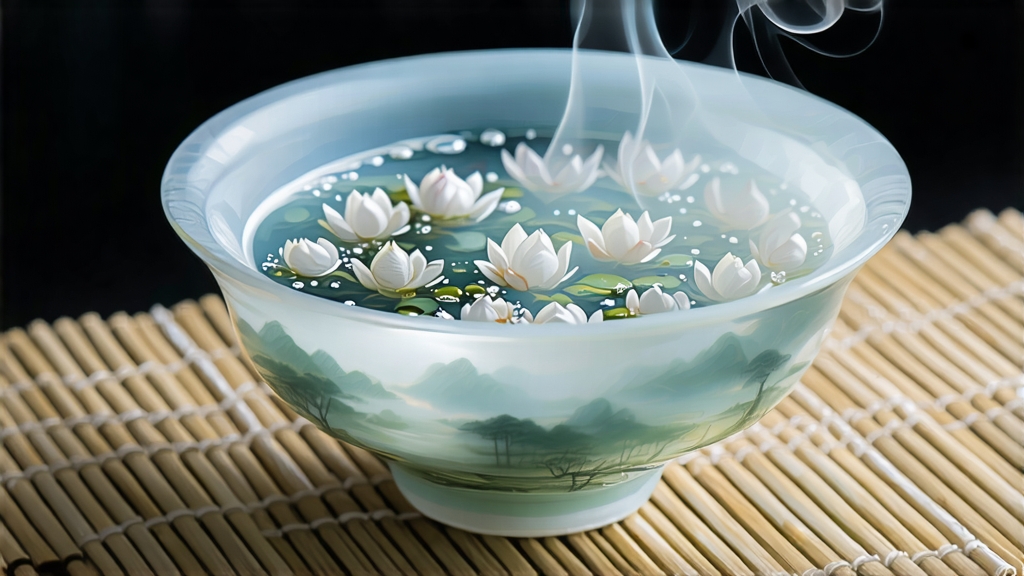
Bai Hao Yin Zhen—“Silver Needle of White Down”—is the quiet aristocrat of Chinese tea. While green tea dazzles with jade brightness and pu-erh murmurs of ancient caravans, Silver Needle whispers, inviting the drinker to listen for subtleties that can be drowned by a single cough. International drinkers often meet white tea through bagged blends labeled merely “white,” yet the original loose bud, sun-withered and barely touched, remains largely unknown outside specialist circles. This essay unfurls the story of that bud: where it arose, how it is coaxed from leaf to liquor, and the ritual etiquette that coaxes its lunar perfume into the cup.
-
Historical roots: from imperial tribute to minimalist revival
Song dynasty emperor Huizong (1082-1135) wrote rapturously of “white buds among the tribute cakes,” but the first unmistakable description of needle-shaped white tea appears in the Ming-era Tea Record of Tian Gong County (1554). The county—today’s Fuding in northern Fujian—possessed the ideal alliance of sea mist, red granitic soil, and cultivars whose downy apical buds refuse to unfurl into full leaves even in late April. By the early Qing, Silver Needle was freighted down the Wuyi mountain passes to Guangzhou’s Thirteen Factories, sailing onward to Dutch merchants who marketed it in Europe as “Pekoe Souchong,” a name that still confuses tea taxonomists. After the Opium Wars the trade collapsed; bushes were grubbed up for rice. Revival arrived only in 1891 when missionary-botanist Ernest Wilson sent specimens to Kew Gardens, igniting foreign curiosity. Republican-era planters grafted selected Da Bai Hao trees, and by 1963 the state-designated “Fuding Da Bai Hao” cultivar became the genetic template for authentic Silver Needle. Today the bud is protected under China’s Geographic Indication (GI #AGI2010-05-223), a status akin to Champagne in France. -
Terroir and cultivar: why Fuding matters
Although neighboring Zhenghe and Jianyang also produce white tea, connoisseurs prize Fuding’s coastal microclimate: morning fog rolling off Sandu’ao Bay slows transpiration, allowing the bud to wither for up to 72 hours without turning grassy. The soil is acidic (pH 4.5-5.5), rich in ion-exchangeable potassium that thickens the bud’s pubescence—those silvery trichomes that give the tea its name. The official cultivar, Camellia sinensis var. sinensis ‘Fuding Da Bai Hao’, is a large-white variety whose single bud can weigh 0.5-1.2 g, twice that of an average green-tea bud. Crucially, the polyphenol oxidase activity is naturally low, so even minimal withering halts the march toward black-tea oxidation. -
Plucking calendar: the three-day window
Silver Needle is harvested only in early-mid March, when the air’s diurnal temperature swing (8 °C at dawn, 18 °C at noon) tightens the bud’s internal structure. Pickers work barefoot on 40 °C bamboo ladders to avoid shaking dew off the buds; any drop lost means one less hour of natural withering later. A skilled woman can pluck 800 g of buds per day, but 5 kg of fresh buds shrink to 1 kg of finished tea—hence the price that rivals top-grade Longjing. -
Crafting without fire: the art of passive chemistry
Unlike green tea’s kill-green wok or oolong’s charcoal bake, Silver Needle is made by “two suns and one breeze.” First sun: buds are spread 2 cm thick on water-reed trays for 15-30 minutes, depending on UV index, to drop surface moisture to 65%. Then they rest in shaded corridors where a gentle cross-breeze (0.5 m s⁻1) continues dehydration for 20-28 hours. Enzymes—particularly peroxidase and β-glucosidase—liberate floral aglycones such as linalool and geraniol, creating the tea signature honeysuckle note. Finally a second, weaker sun (late afternoon, <28 °C)